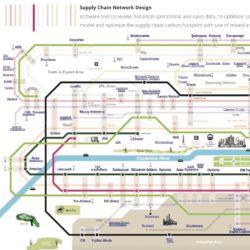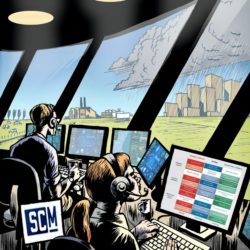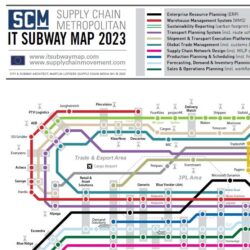Opaque sustainability software market causes confusion

The global supply chain sustainability software market will grow from US$1.7 billion in 2023 to US$7.7 billion in 2029, according to UK analysts Verdantix. This fast-growing software market is currently hugely opaque, causing problems for companies that need to look for a specific software solution due to mandatory European CSRD requirements. Supply Chain Media has published the first version of the ESG IT Subway Map Europe to help companies discern the right European software vendors.
Demand for sustainability software appears to be growing rapidly in Europe, driven by the introduction of the European Union’s Corporate Sustainability Reporting Directive (CSRD). This new directive will require an estimated 55,000 companies in Europe to publish comprehensive and standardized reports on their sustainability performance from this year on. Earlier, it seemed that only large European publicly listed companies would be subject to such reporting requirements. But unlisted companies and SMEs that directly or indirectly supply those multinationals will also be affected by the administrative CSRD obligations.
Fragmented market
Due to stricter regulations, companies need to collect detailed and accurate data on their environmental, social and governance (ESG) impact. This calls for specific ESG software solutions that allow companies to process, analyse and report based on the large amounts of data. As ESG covers a broad field of activities, software solutions vary considerably in terms of focus and functionality. Consequently, the ESG software vendor market is quite fragmented and crowded.
Unlike the supply chain software market, with clearly distinguishable types such as WMS, TMS, S&OP and ERP, there is currently also no accepted designation of different categories for ESG software.
Five subway lines
To provide a practical overview of relevant software vendors, Supply Chain Media has developed the ESG IT Subway Map Europe. Like the globally known SCM IT Subway Map, this visual resource depicts various subway lines, each showing vendors of a particular type of software. The ESG Subway Map is based on each vendor’s country of origin in western Europe.
Although there is quite a bit of variation in how different software analysts refer to ESG software, five types are starting to stand out. The largest and best-known players are in the Corporate Carbon Management category for official reporting towards auditors and accountants. Sweep, EcoVadis, Carbmee and Integrity Next are among the companies with a station on this subway line. Some of them also have a station on the second subway line: the Scope 3 Calculations category, which also includes specialists like BigMile and Searoutes. For reporting purposes, they provide manufacturing or trading companies with actual data on transport-related CO2 emissions generated in their supply chains by suppliers, customers and logistics providers.
Software vendors such as GoodShipping, CarbonLeap and South Pole offer software for Carbon Insetting: reducing the transport-related carbon footprint, including through the use of biofuel. Supply Chain Traceability software, from vendors including TrusTrace, Everledger and Haelixa, allows users to create a product passport listing all suppliers used in the chain. The last category of ESG software is Sustainability Visibility Platform, which allows users to create IT interfaces with the various players in the supply chain to collect relevant data.
As this market is in a state of flux and software vendors are still expanding their functionality, this ESG IT Subway Map will no doubt require various additions and changes in the future.
Download the ESG IT Subway Map 2024
To provide a practical overview of relevant software vendors, Supply Chain Media has developed the ESG IT Subway Map Europe. Like the globally known SCM IT Subway Map, this visual resource depicts various underground lines, each showing vendors of a particular type of software. The ESG Subway Map is based on the vendor’s country of origin, in Western Europe.










